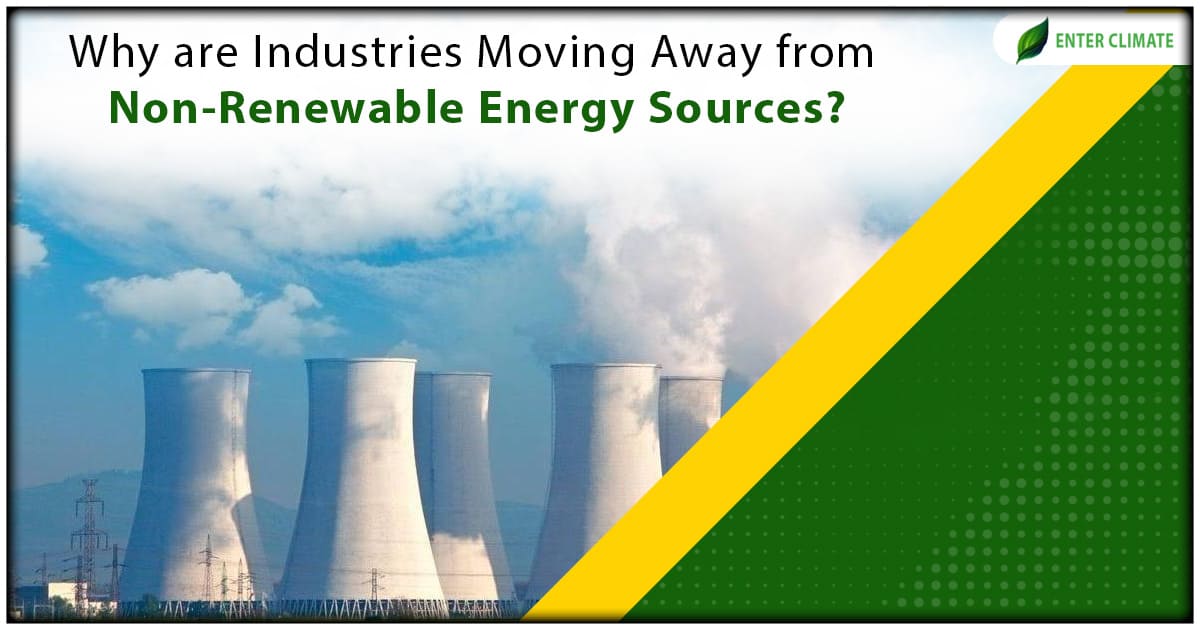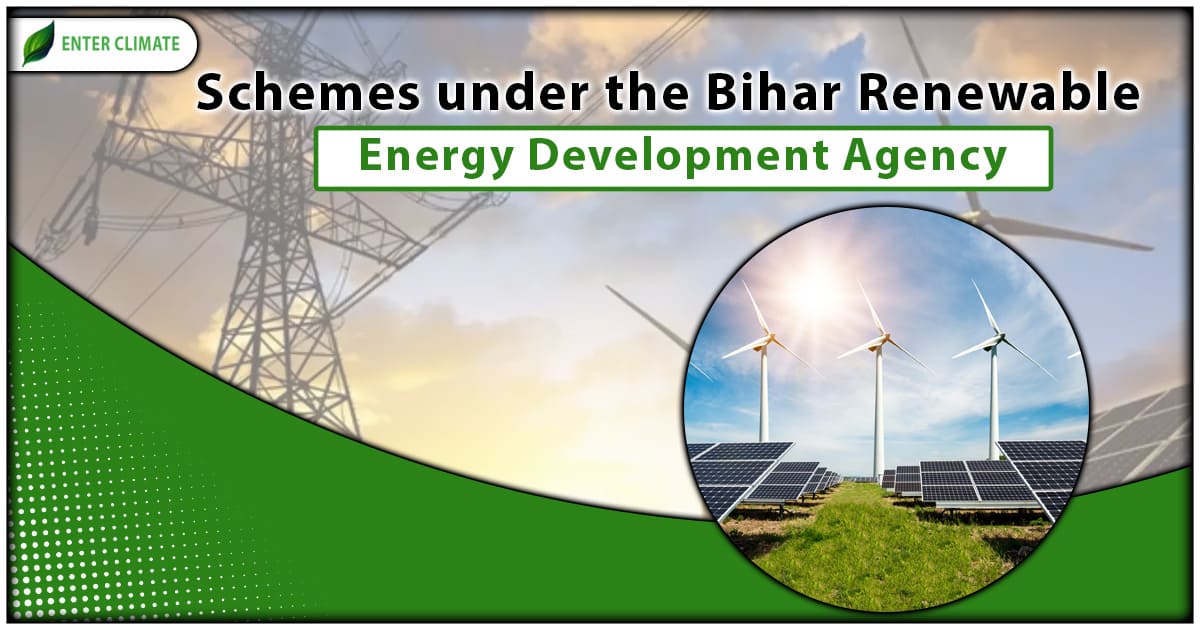Why are Industries moving away from Non-Renewable Energy Sources?
 24 Jul, 2023
24 Jul, 2023 
Renewable energy refers to energy obtained from natural resources that can naturally replenish themselves within a human lifetime without depleting the Earth’s resources. These resources, including sunlight, wind, rain, tides, waves, biomass, and thermal energy stored in the Earth’s crust, are widely available in various forms across the globe. The remarkable advantage of these sources lies in their virtual inexhaustibility, making them sustainable for the long term which is just the opposite as in the case of Non-renewable energy sources. Furthermore, they have the added benefit of causing minimal harm to the climate and the environment. In contrast, fossil fuels like oil, coal, and natural gas are available in limited quantities. As we continue to extract and consume them, they will eventually become depleted. Although these fuels are produced through natural processes, they cannot replenish as rapidly as we humans consume them. Consequently, they pose a finite and exhaustible energy source in contrast to the sustainable nature of renewable energy options.
What are Non-renewable energy sources?
A non-renewable resource is a natural material that cannot renew or replenish itself at a rate equivalent to its consumption. As a result, these resources are limited and finite. Human activities continuously deplete these substances, while the natural processes required to create new reserves take an extremely long time. Examples of non-renewable resources encompass fossil fuels like oil, natural gas, and coal. In contrast, renewable resources function differently as their supplies can naturally replenish or be sustained.
Characteristics of Non-renewable energy sourcesare:
- Non-renewable resources deplete faster than they can regenerate.
- Their supply is limited and not easily replenished.
- These resources are extracted directly from the Earth.
- Common examples include most fossil fuels, minerals, and metal ores.
- Renewable resources, on the other hand, are abundant and considered sustainable in contrast to non-renewable resources.
Non-renewable sources vs renewable sources
Non-renewable resources are distinguished from renewable resources. Renewable resources are characterized by their abundant and inexhaustible supplies, making them readily available and easily replaceable. Unlike non-renewable resources, renewable ones are generally sustainable, as they cannot be depleted. Examples of renewable resources include the sun, wind, and water, which are widely recognized. Additionally, renewable resources encompass lumber, which can be replenished through planting, geothermal energy derived from the earth’s heat, and biomass. There is a growing emphasis on utilizing renewable resources, especially as energy sources, due to the rapid depletion of non-renewable[1] resources and their contribution to climate change. Clean energy options, such as solar energy and wind-powered turbines, serve as prominent examples. These sources have the advantage of replenishing themselves naturally and have minimal detrimental effects on the environment.
Transitioning away from non-renewable energy sources
Our society heavily relies on non-renewable resources with limited availability. Therefore, it becomes crucial to advocate for alternative energy sources, particularly renewable options like solar and wind power. Shifting away from non-renewable resources and embracing renewable energy plays a pivotal role in achieving a sustainable future. This transition encompasses significant structural initiatives like the Paris Agreement, as well as the everyday choices made by businesses and individuals.
Taking action to reduce dependence on non-renewable resources includes various measures, both on a larger scale and in individual practices. For instance, driving electric and hybrid vehicles, installing solar panels, ensuring proper insulation for homes and businesses, and using energy-efficient appliances are all smaller yet impactful changes that contribute to minimizing non-renewable resource consumption.
Ideas of alternative businesses other than Non-renewable energy sources
The alternative business ideas that are profitable in the long runare as follows:
- Photovoltaic modules/solar panels
- Power inverters designed for use in photovoltaic power systems
- Solar cells
- Solar water pumps
- Biomass dryers
- Storage batteries specifically designed for solar photovoltaic applications
- Wind turbines and generators
- Electrolysers used for green hydrogen production
- Capacitors tailored for solar applications
- Solar lanterns and solar home lights
- Energy storage devices, including high-energy lithium-ion and sodium-ion batteries, as well as redox flow batteries
- Power electronic devices, such as voltage converters and photovoltaic inverters
- Biomass gasification units
- Biomass pelletization and torrefaction plants
- Biomass briquette manufacturing machines
Conclusion
Non-renewable energy sources have played a pivotal role in powering human civilization for centuries. However, their widespread use has led to critical environmental challenges, including greenhouse gas emissions, air pollution, and resource depletion. As we confront the urgent need to address climate change and transition to more sustainable energy systems, it becomes increasingly evident that reliance on non-renewable resources is not a viable long-term solution. The finite nature of these resources necessitates a shift towards cleaner and renewable energy alternatives. It is highly recommended to take expert advice while planning to set up a business based on the renewable energy sector to get an idea about the specific licenses and approvals that would be required.
FAQs
It is important to it important to move away from non-renewable to renewable sources as Renewable energy, sourced from abundant and constantly replenished natural resources, plays a crucial role in creating a safer, cleaner, and more sustainable world.
The primary obstacle to renewable energy adoption is its cost, particularly the initial capital expenses associated with constructing and installing solar and wind farms.
The combustion of these resources leads to the release of carbon dioxide into the atmosphere. Carbon dioxide is the predominant greenhouse gas responsible for climate change and the non-renewable sources will depleteover time.
Two main problems are the rise of greenhouse gas emissions, non-renewable energy sources are also responsible for releasing various pollutants that have adverse effects on both human health and the environment.
Solar energy and wind power, due to their intermittent nature, cannot offer a continuous and readily available power source 24/7. Both solar and wind energy are unpredictable, leading to fluctuations in generation, as well as variability in power demands.
Non-renewable energy sources are gradually depleting from the Earth as they take billions of years to form. Additionally, certain non-renewable sources, such as fossil fuels, emit carbon monoxide, leading to pollution and potential respiratory issues in humans.
Four primary categories of non-renewable resources include oil, natural gas, coal, and nuclear energy.
The challenges are Power availability, Resource location constraints, Information barriers, Cost-related concerns, Availability of resources, etc.
The shift towards cleaner energy sources comes with notable obstacles. Key issues revolve around various factors, including the cost, accessibility of technology, land availability, political impediments, and community awareness.
The combustion of coal and oil releases particles that have the potential to pollute the air, water, and land. While some of these particles are captured and contained, a significant portion is released into the atmosphere.
Read our Article: Renewable Energy Sources And Their Potential In India
Categories
Latest Post
Air pollution Dispersion Modeling
Natural Disaster Risk Assessment
Endangered Species Protection
Aquifer Recharge Project
Sustainable Sanitation Solutions














